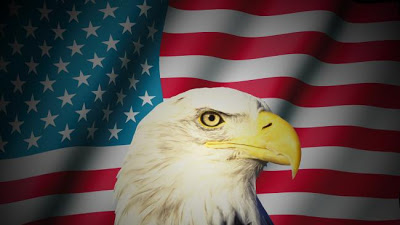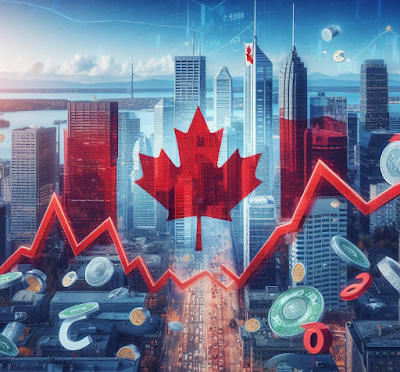Summary:
Dollar movement helps some economic interest and hurts others.
From a strategic point of view, the best thing for the US is the market-generated rate.
It was an important achievement that the forex market was de-weaponized.
Many observers have been crying wolf about a currency war for many years, which may have de-sensitized investors to the threat of a real one.
 Reports suggest that recently President Trump asked National Security Adviser Michael Flynn about whether it was a strong or weak dollar that was in the US interest. According to the leaks, Flynn suggested asking an economist.
Reports suggest that recently President Trump asked National Security Adviser Michael Flynn about whether it was a strong or weak dollar that was in the US interest. According to the leaks, Flynn suggested asking an economist.
The simple question is very revealing for those of us still trying to get a handle of the unorthodox new Administration. First, it means that the President has not made up his own mind, which implies more fluidity than some of the strongly worded statements and tweets suggest. Second, it underscores our caution that the formal power structure may not apply. Informal power structure may be more important. There is always some tension between how much authority the White House and in the cabinet. Trump’s style suggests much will kept in the White House. Third, in the early days of the Administration have been marked by a steady stream of leaks, agitating the already tense relationship between the White House and some parts of the media.
Many seem to be asking the same thing about the dollar, but the question is naive and misguided. It wrong assumes that the US economy, or any modern economy, is a homogeneous entity instead of diversified and complex system. In the simplest terms, it might be more helpful to recognize that there are winners and losers for different policy configurations. We already see it with the coming debate over the so-called border adjustment (tax on imports and a tax break for exports), as several large US businesses are on both sides.
The question assumes a static and one-dimensional view. What is strong and weak changes over time Also it may vary over the business cycle. There are also various measurements that can be used to give a holistic view. Sometimes the dollar can be strong against emerging market currencies and weaker against other major currencies. There are real and nominal trade-weighted measures and various equilibrium models, like purchasing power parity and real effective exchange rates. The euro may be undervalued for German producers, but it may also be overvalued for Italian or Greek, and maybe French exporters.
Relative business cycles may also be important. For example, the relative strength of the dollar since mid-2014 seems to be largely a function of the diverging economic and monetary performance of the US. The Federal Reserve finished its unorthodox monetary policy and was preparing the market for the beginning of a gradual normalization process. Japan and much of Europe was still in the early stages of their unorthodox efforts. That is the way the floating exchange rate should move: Strong economies with tightening monetary policy have appreciating currencies. Weak economies with easy monetary policy have weaker currencies. Typically central bankers want the broad measure of the currency to move in the direction of monetary policy.
The best answer to give to President Trump, however, may be that it is in the US interest to let market forces determine the value of the dollar. This is part of the agreements that the US not only encouraged but insisted on at the G7 and G20. It may not be at the level of a treaty, but it is an important concession the US won. At Bretton Woods, there was not doubt there was going to be a fixed exchange rate regime of one kind or another. When Bretton Woods broke down, the necessity of floating exchange rates became a virtue, and the US the most powerful advocate.
There may also be a fundamental confusion of what the two-decade-old strong dollar policy means. It has not helped that various officials themselves have offered different definitions. It has not helped that the strong dollar policy has been scoffed and often seemingly intentionally misconstrued.
It was not, as one Treasury Secretary suggested, difficult to counterfeit. It was never about the level, as many commentators insisted upon mocking. It was a signal to the world that after a ten-year period of activism, the US would forswear the use of the dollar as a bludgeon to beat policy concessions not from its enemies but allies, like Germany and Japan.
When Robert Ruben first announced the strong dollar policy in 1995, it was meant to signal a break from the ill-fated Lloyd Bentsen’s stint at the head of Treasury. Bentsen had threatened Japan with driving the dollar down against the yen if Japan did not make trade concessions. The US dollar fell sharply.
The US was thought to be risking the role of the dollar in the world economy and the funding of the budget deficit. After the Maastricht Treaty, many expected that the euro would replace the dollar as the world’s key reserve asset. Its current account surplus was thought to make the euro more attractive than the dollar. The strong dollar policy meant that the US would not purposely devalue the dollar to reduce its debt burden. In no way did that commit the US to a monetary policy that whose goal was the external value of the dollar however measured.
The capitalist rivalry was threatening the economic stability. An arms control agreement was necessary. That is what the strong dollar means. The foreign exchange could be another terrain for competition, but it would be ruinous. So foreign exchange has been de-weaponized. There is a self-policing process. If a country strays too far, it gets pulled back, like Japan in the early days of Abe’s Administration. Given some of the comments coming from the US Administration, it ought not to be surprising that both Merkel and Abe have expressed a desire to talk about the foreign exchange market with the US Administration.
To be clear, the de-weaponization of the foreign exchange market does limit a country’s ability to pursue a monetary policy that is aimed at addressing the domestic economy. Although many observers decried quantitative easing as manipulation of the foreign exchange market, the G7 and G20 made no such demands. For several years, many have cried wolf about currency wars. This has paved the ground for a real currency war by de-sensitizing investors to the threat of a real currency war. The unorthodox US President may clumsily stumble into one, if he is not careful.
Full story here Are you the author? Previous post See more for Next post
Tags: #USD,$EUR,$JPY,newslettersent






































